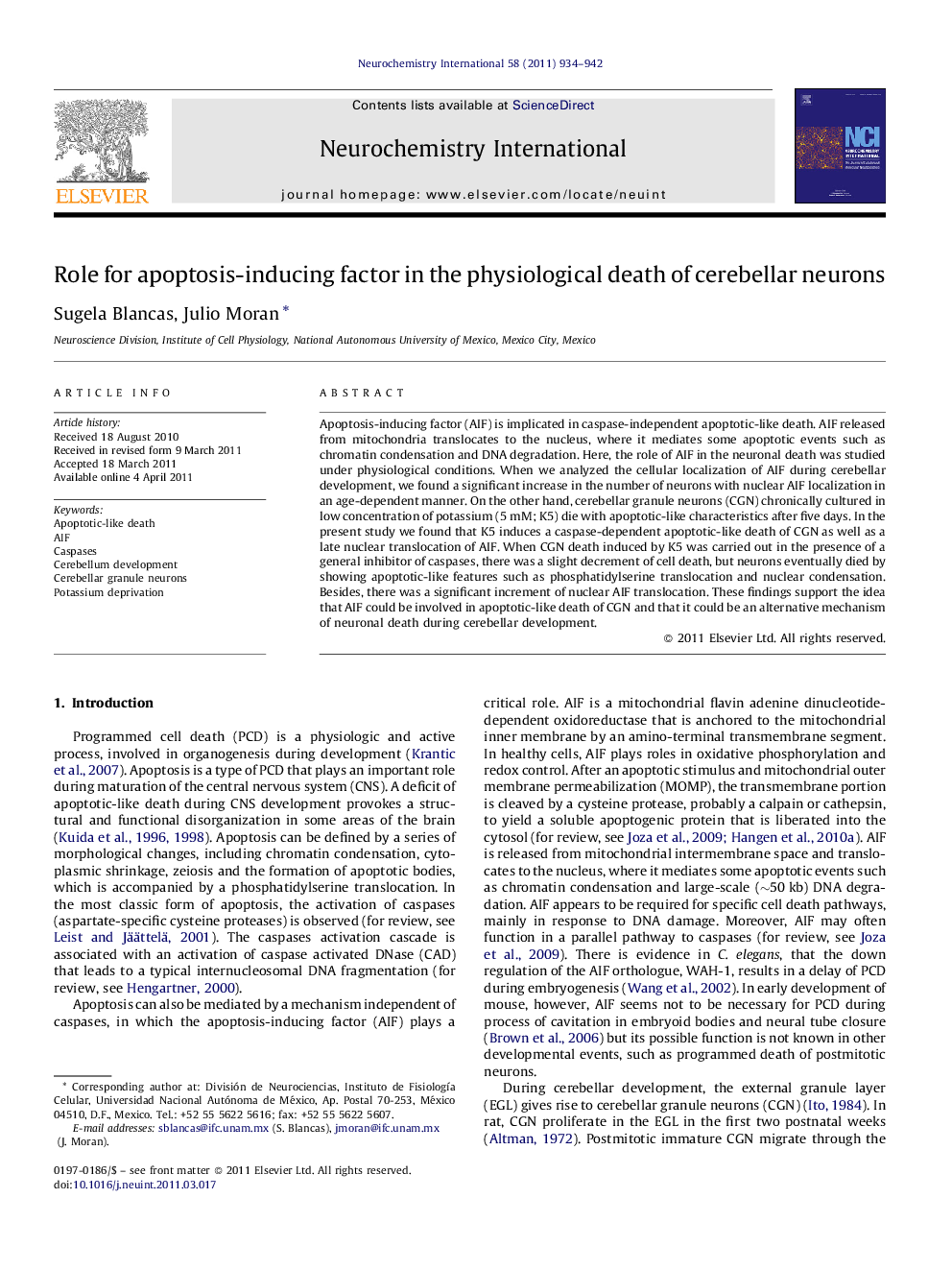| Article ID | Journal | Published Year | Pages | File Type |
|---|---|---|---|---|
| 2201067 | Neurochemistry International | 2011 | 9 Pages |
Apoptosis-inducing factor (AIF) is implicated in caspase-independent apoptotic-like death. AIF released from mitochondria translocates to the nucleus, where it mediates some apoptotic events such as chromatin condensation and DNA degradation. Here, the role of AIF in the neuronal death was studied under physiological conditions. When we analyzed the cellular localization of AIF during cerebellar development, we found a significant increase in the number of neurons with nuclear AIF localization in an age-dependent manner. On the other hand, cerebellar granule neurons (CGN) chronically cultured in low concentration of potassium (5 mM; K5) die with apoptotic-like characteristics after five days. In the present study we found that K5 induces a caspase-dependent apoptotic-like death of CGN as well as a late nuclear translocation of AIF. When CGN death induced by K5 was carried out in the presence of a general inhibitor of caspases, there was a slight decrement of cell death, but neurons eventually died by showing apoptotic-like features such as phosphatidylserine translocation and nuclear condensation. Besides, there was a significant increment of nuclear AIF translocation. These findings support the idea that AIF could be involved in apoptotic-like death of CGN and that it could be an alternative mechanism of neuronal death during cerebellar development.
► Caspase inhibition does not reduce the apoptotic death of CGN induced by chronic K5. ► Caspase inhibition induces an increment of AIF translocation in CGN treated with K5. ► During cerebellar development there are some neurons with nuclear AIF localization.
